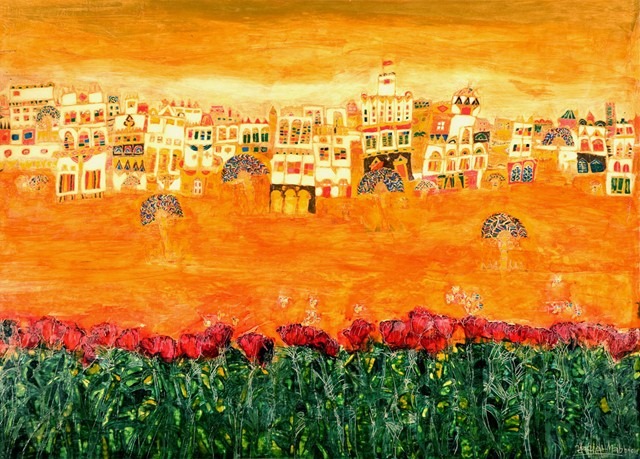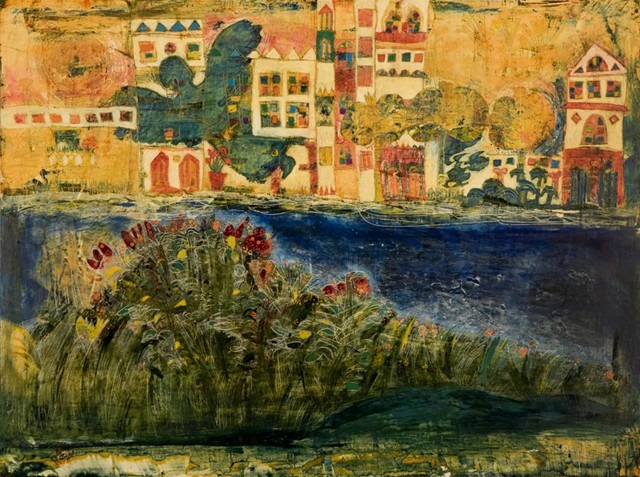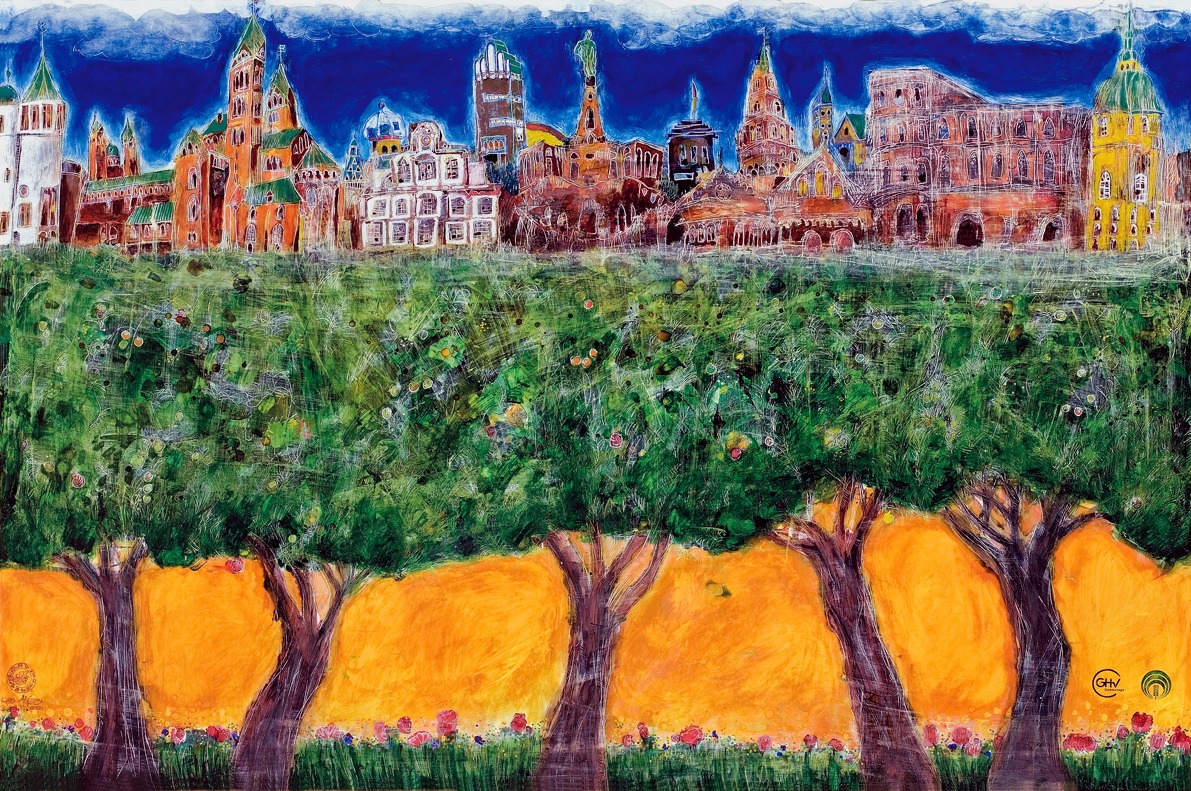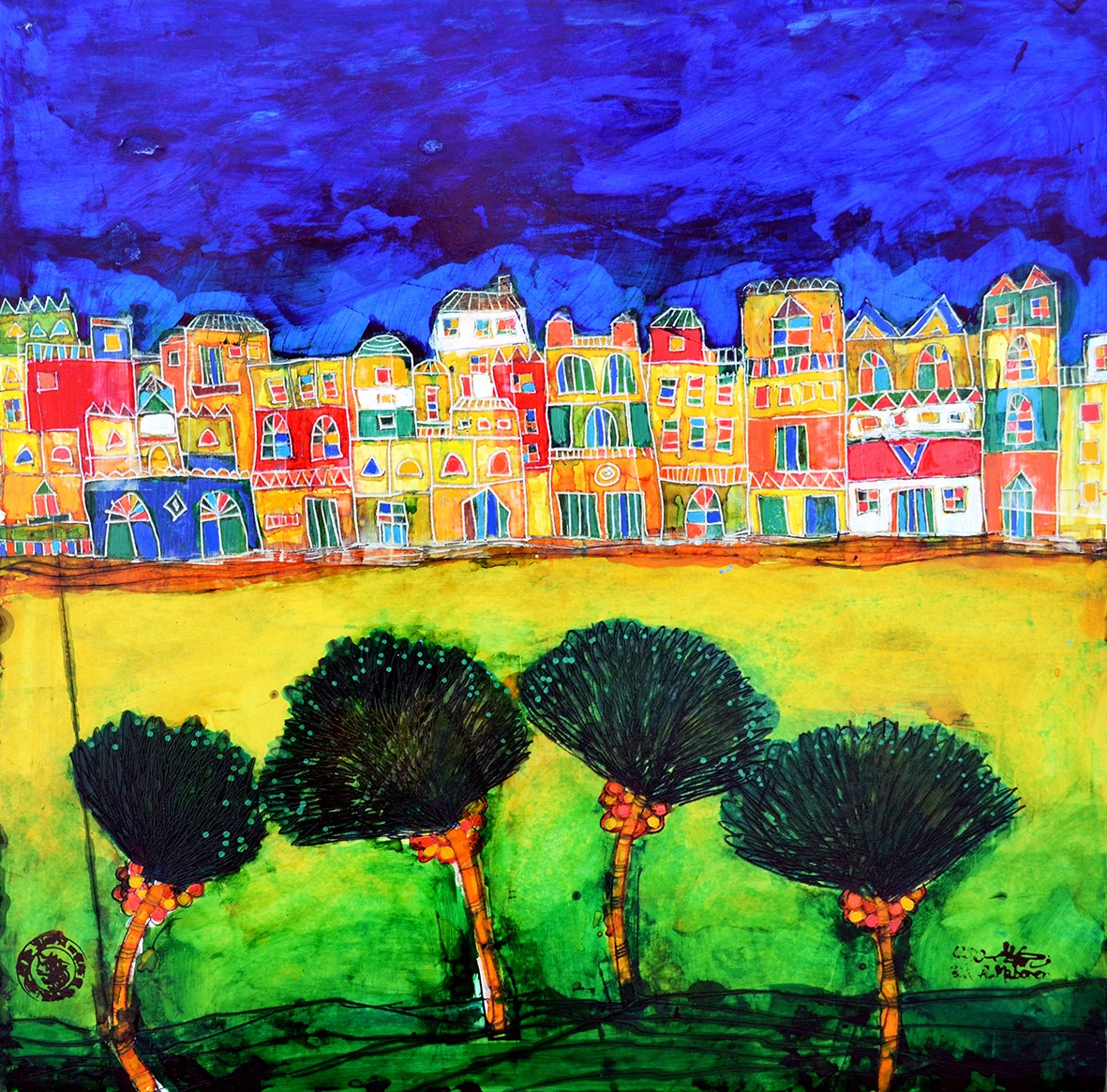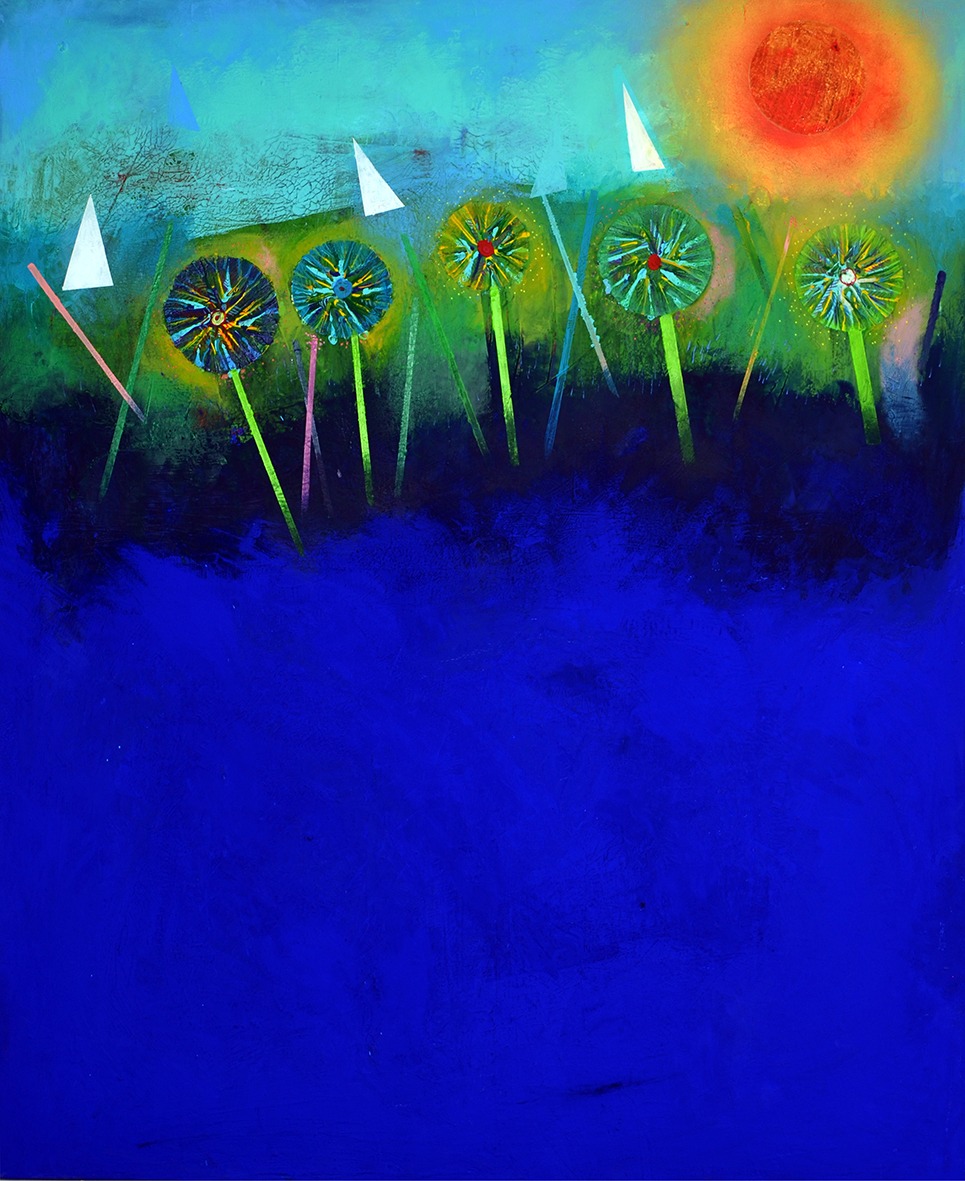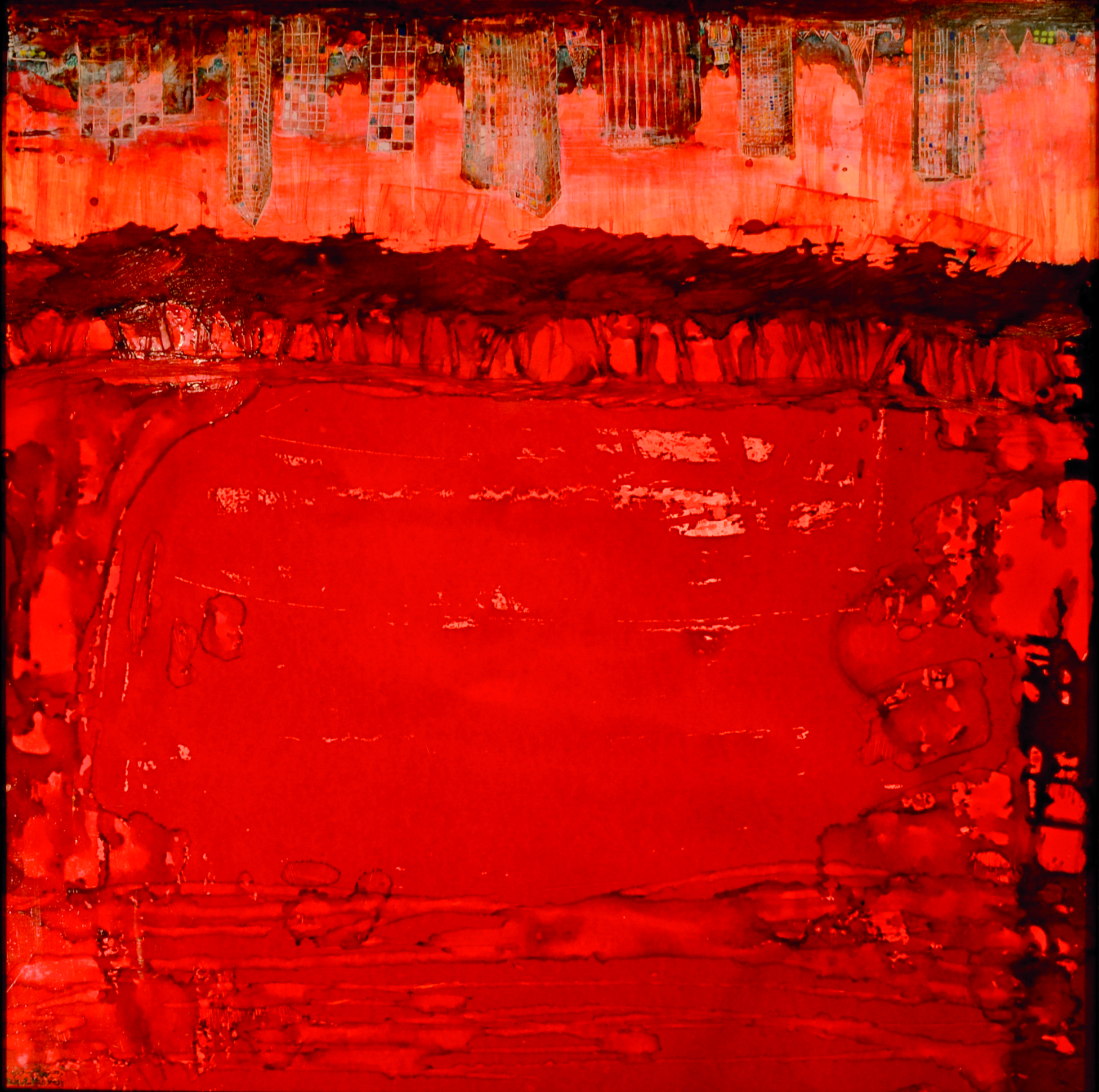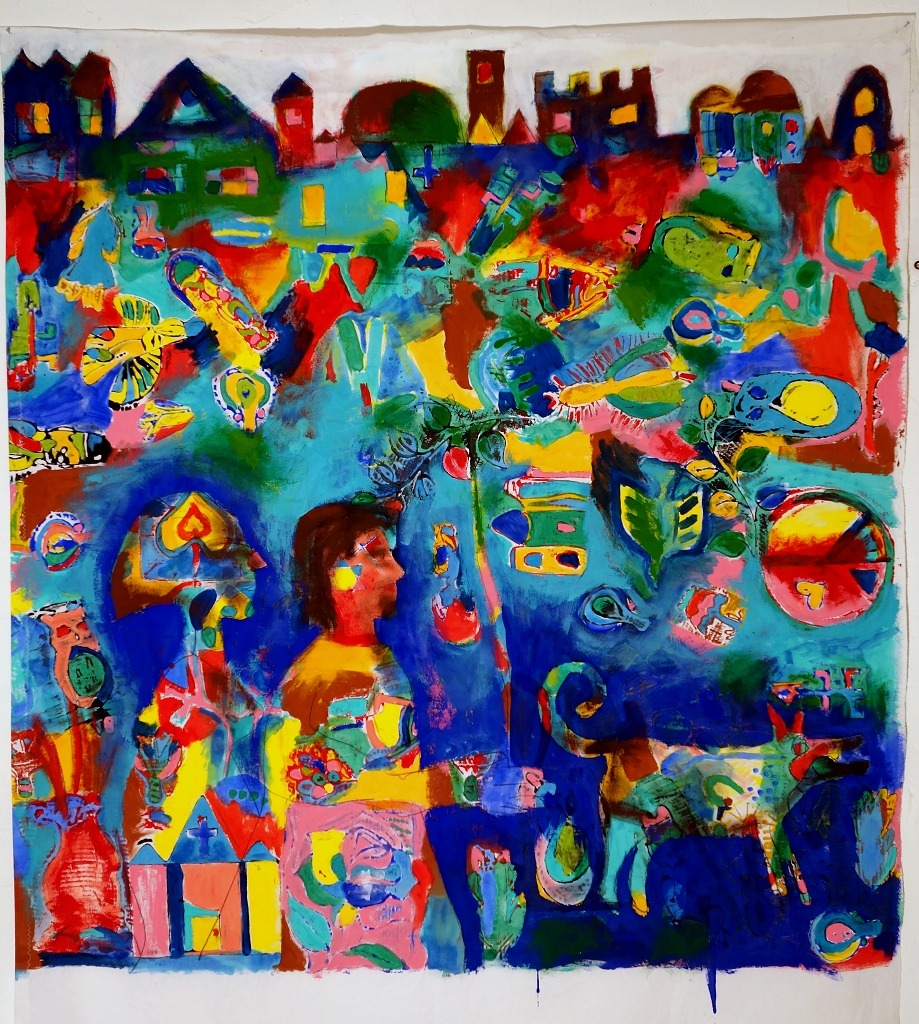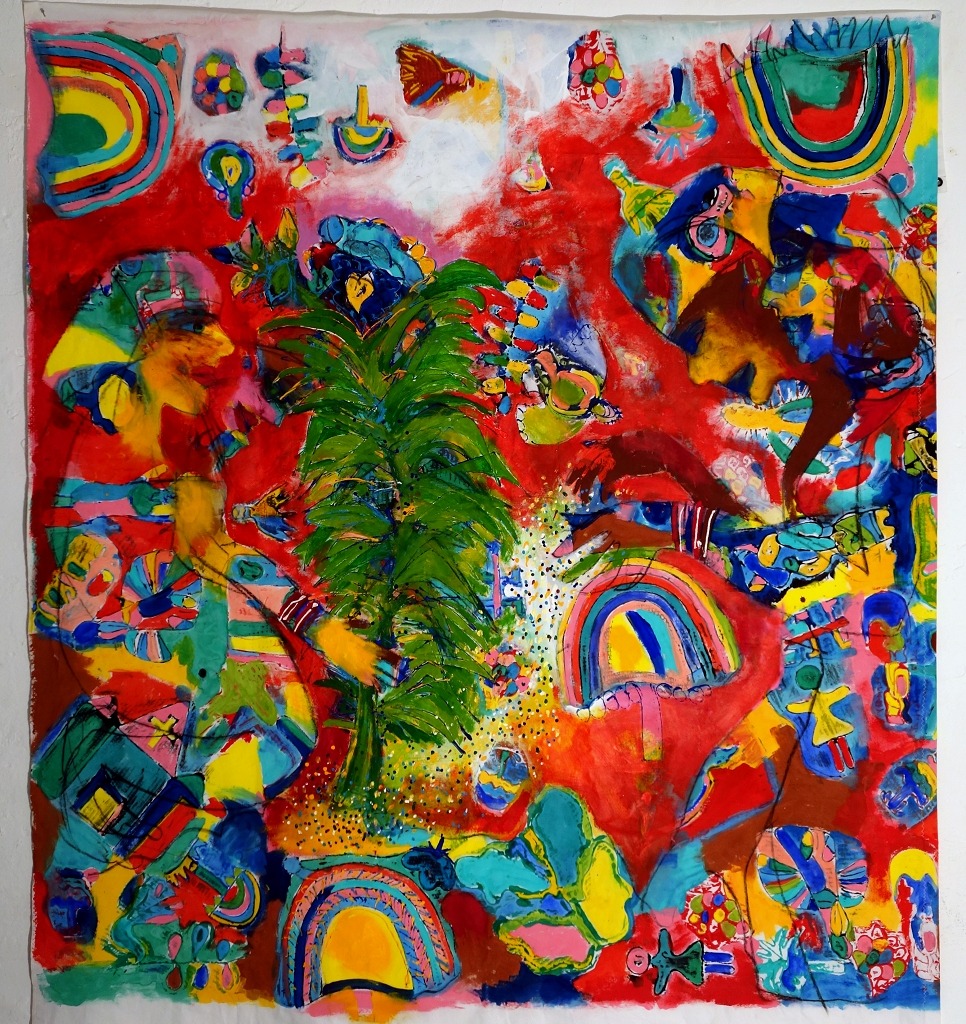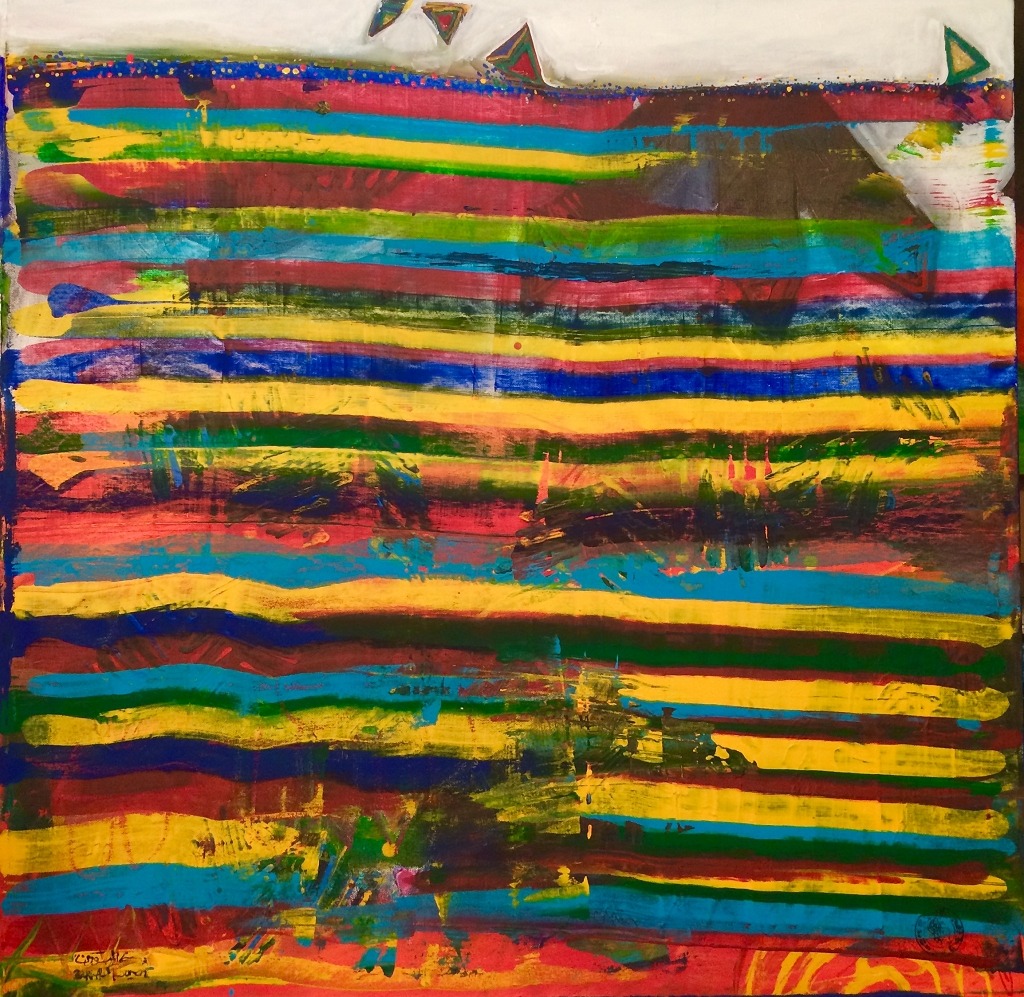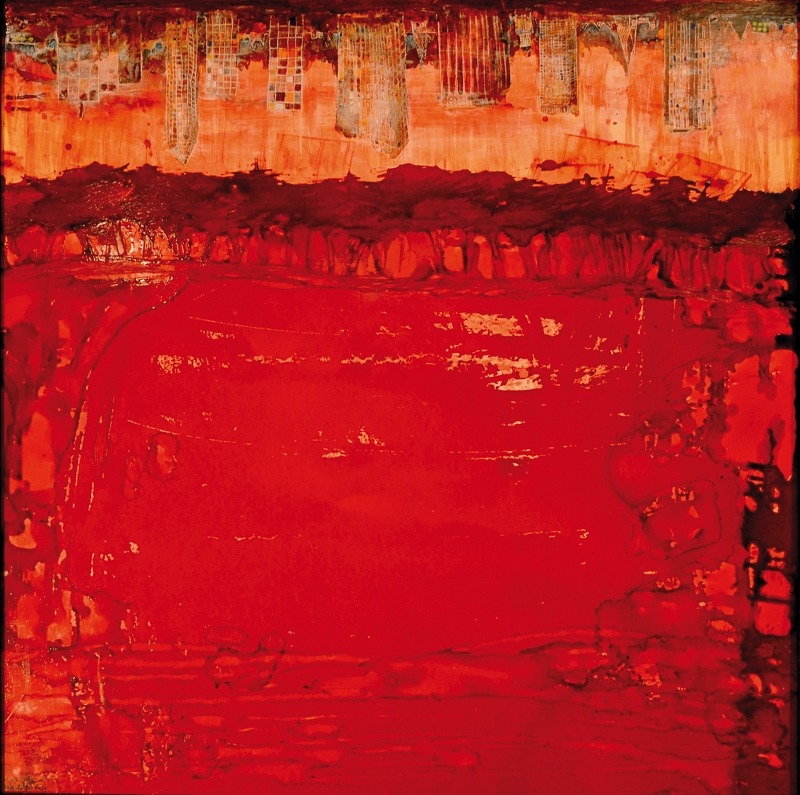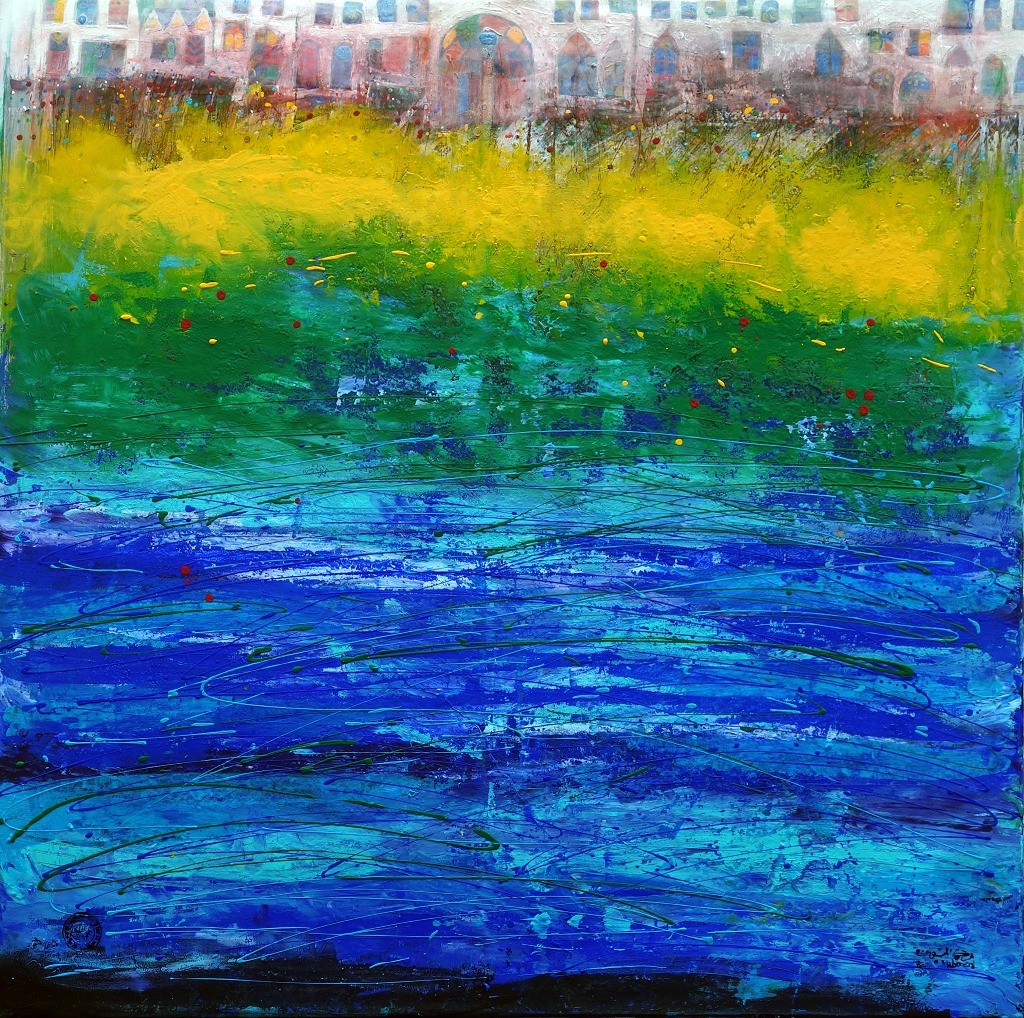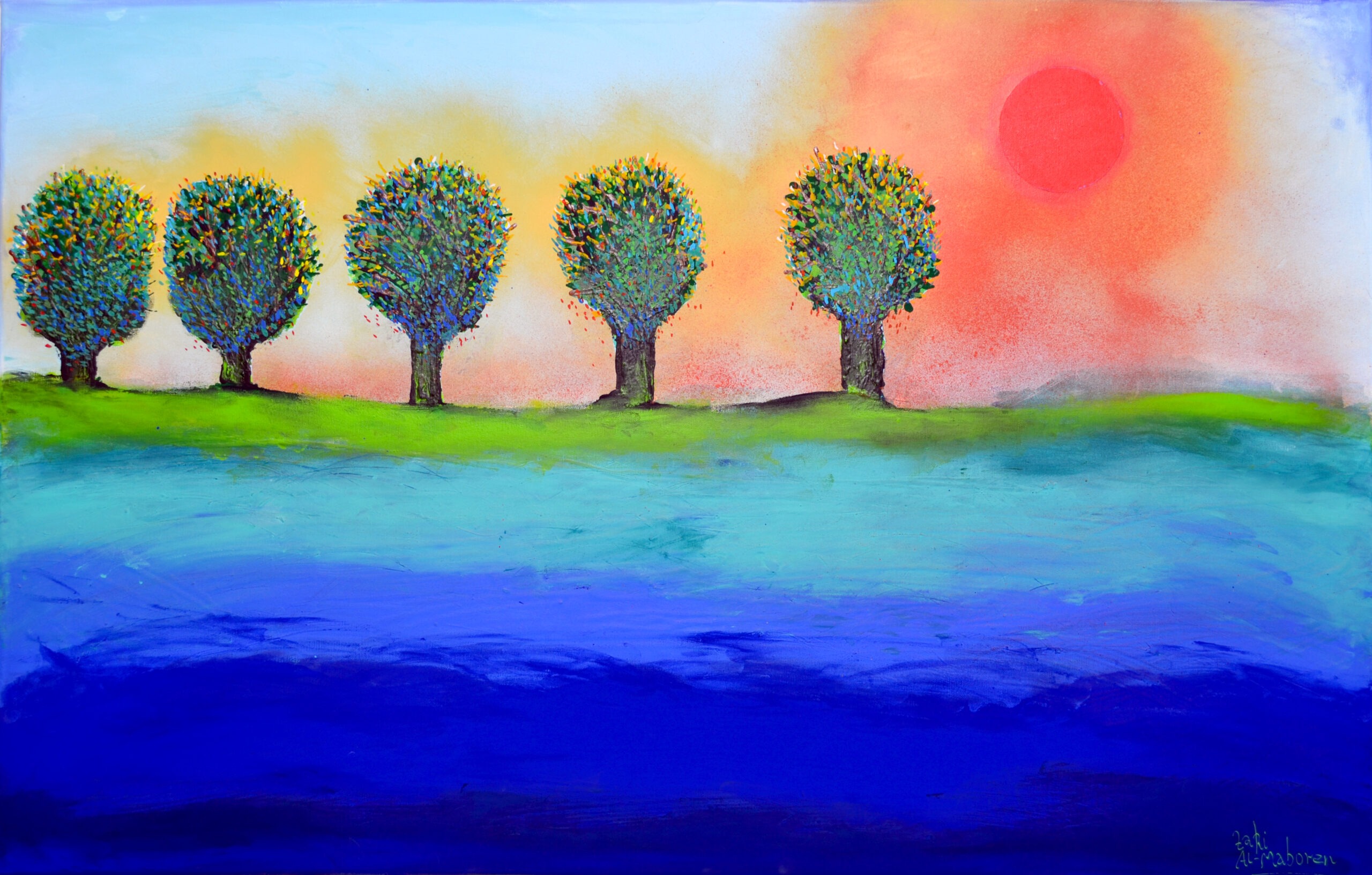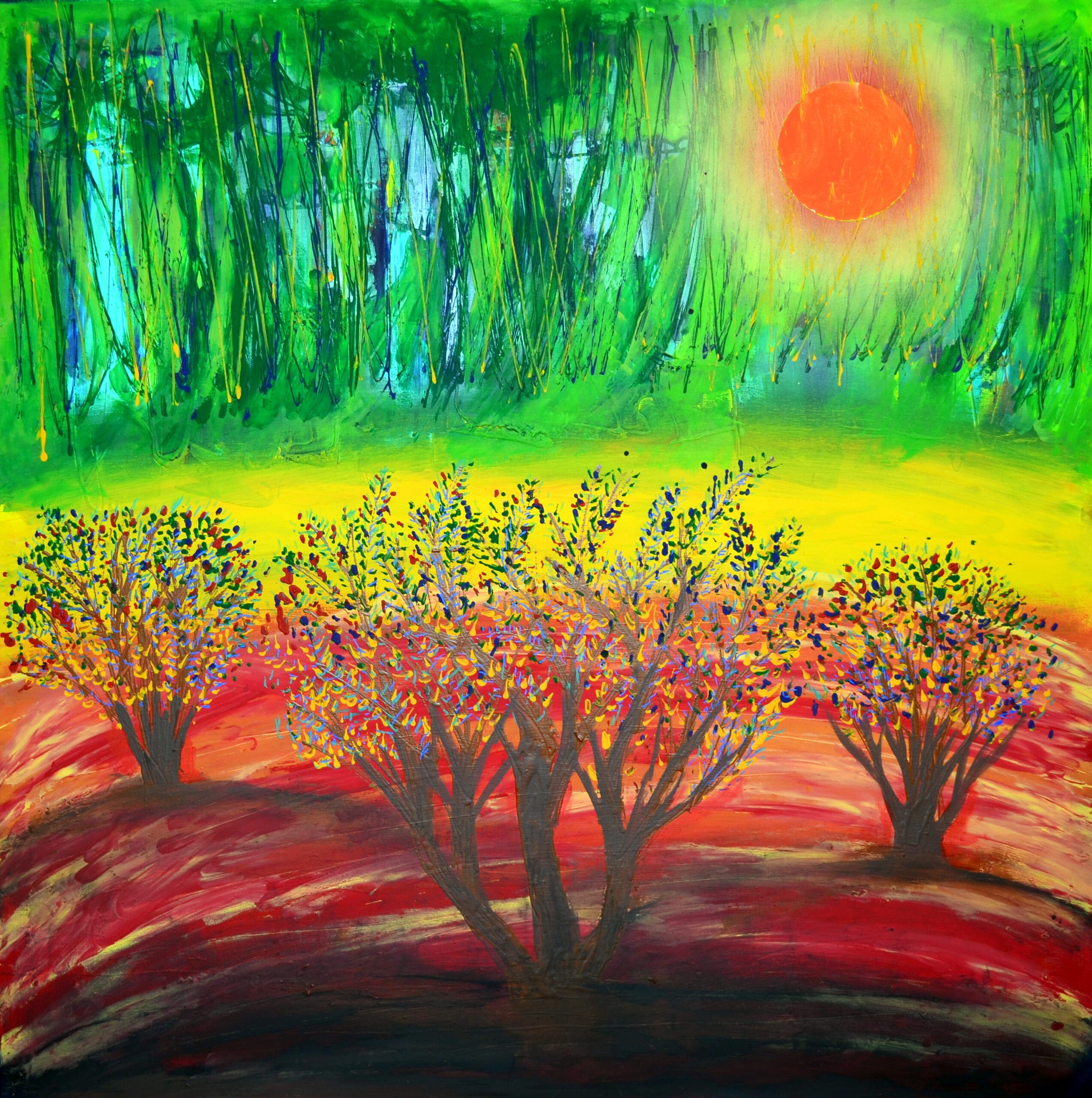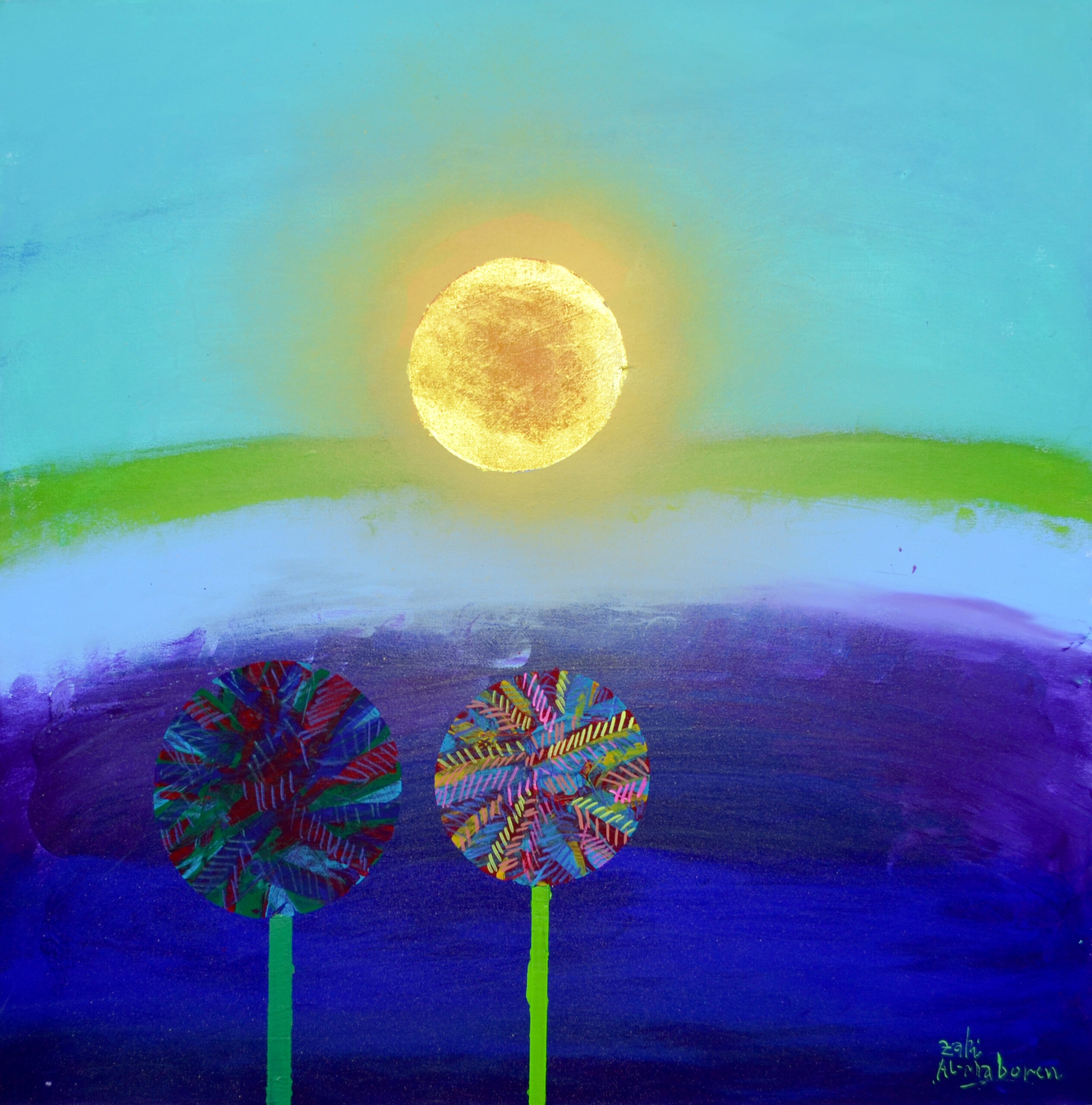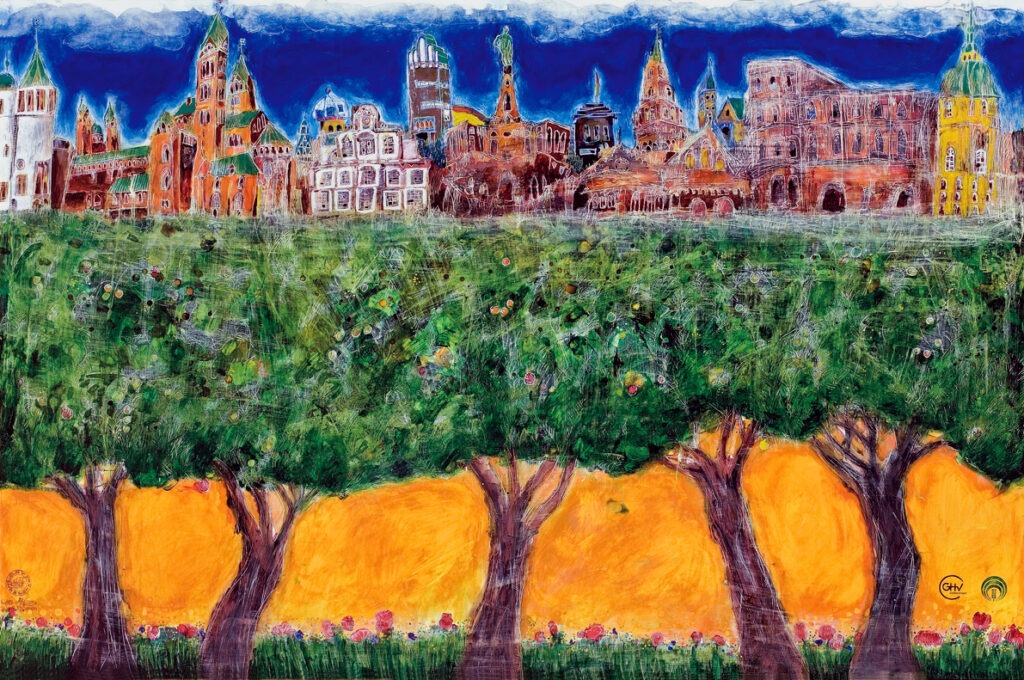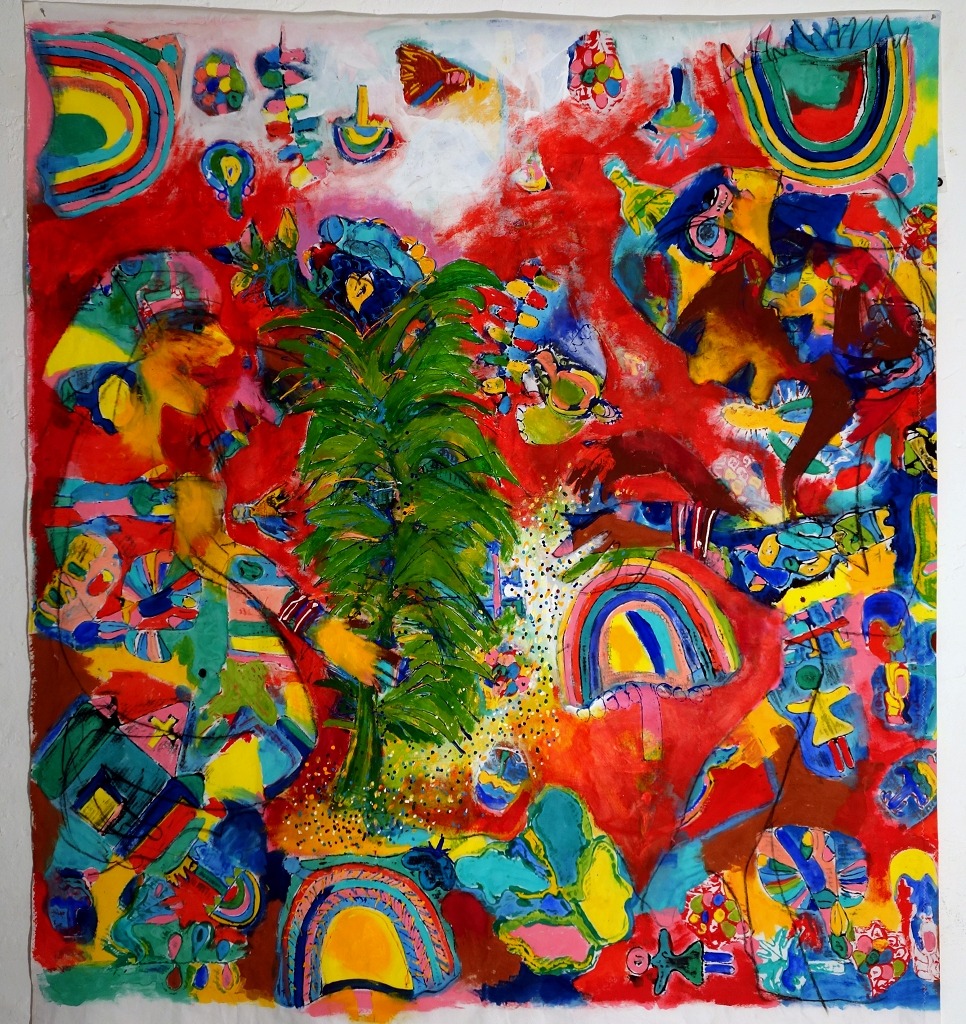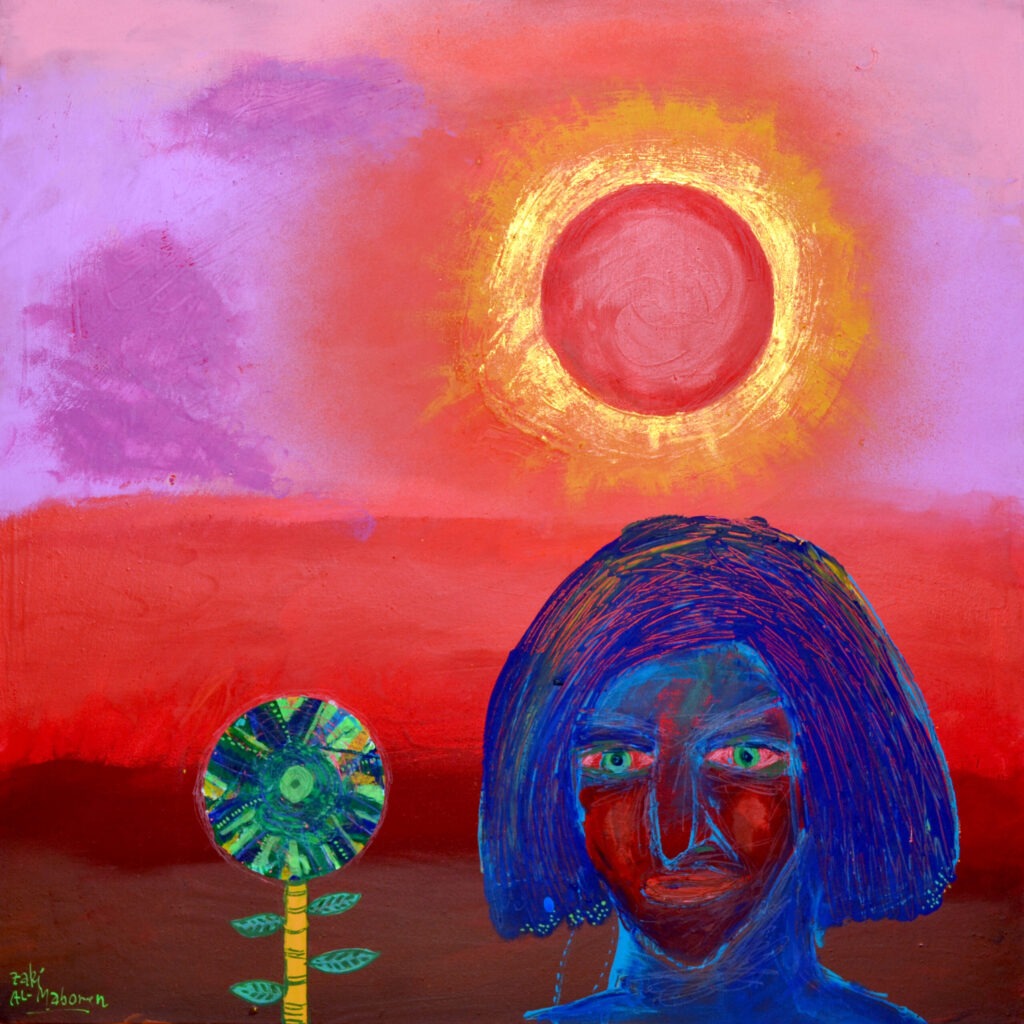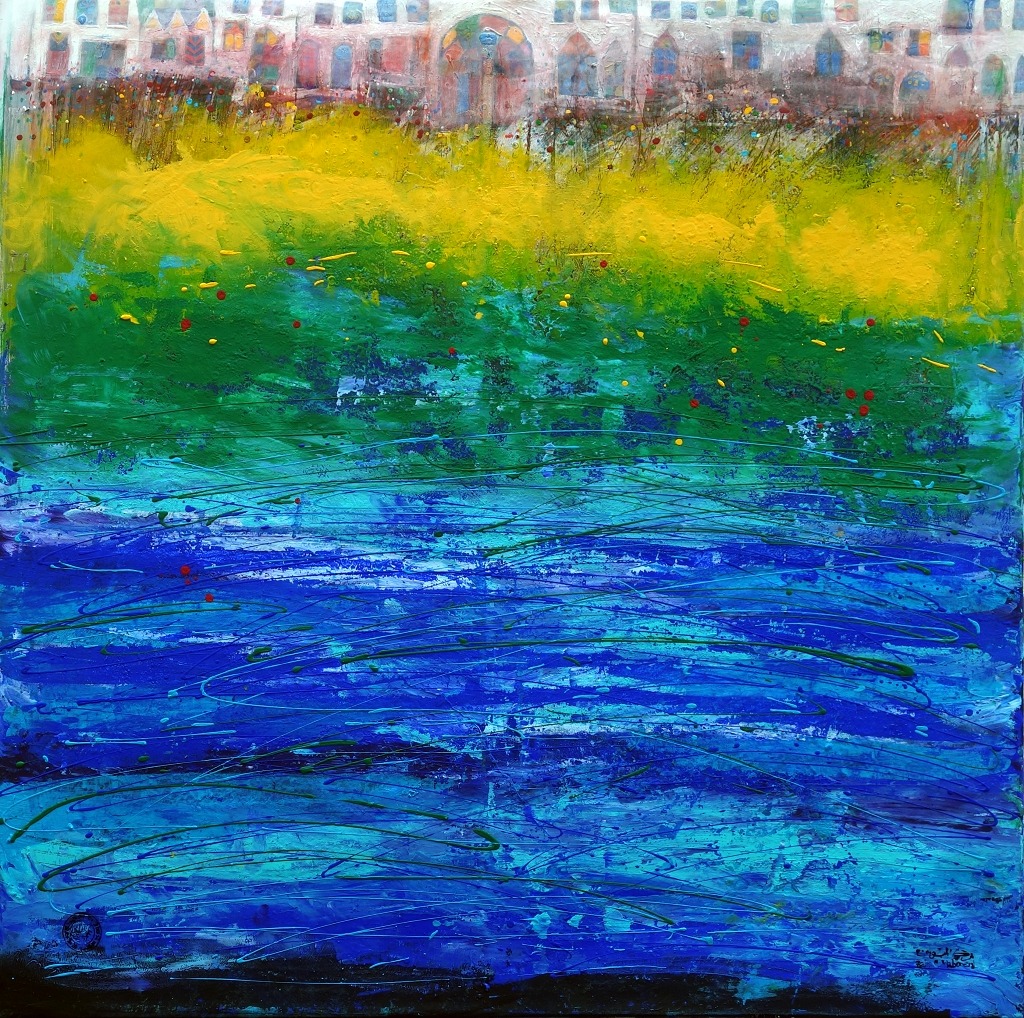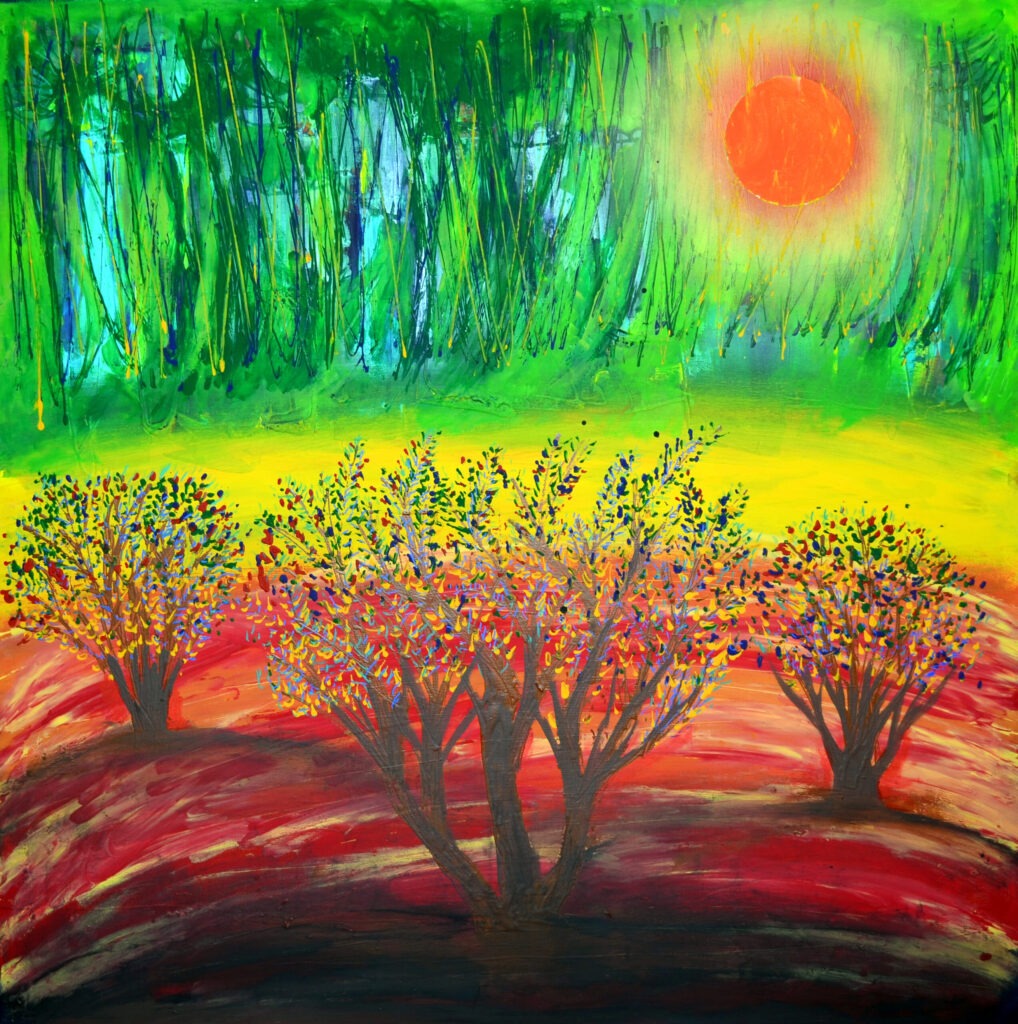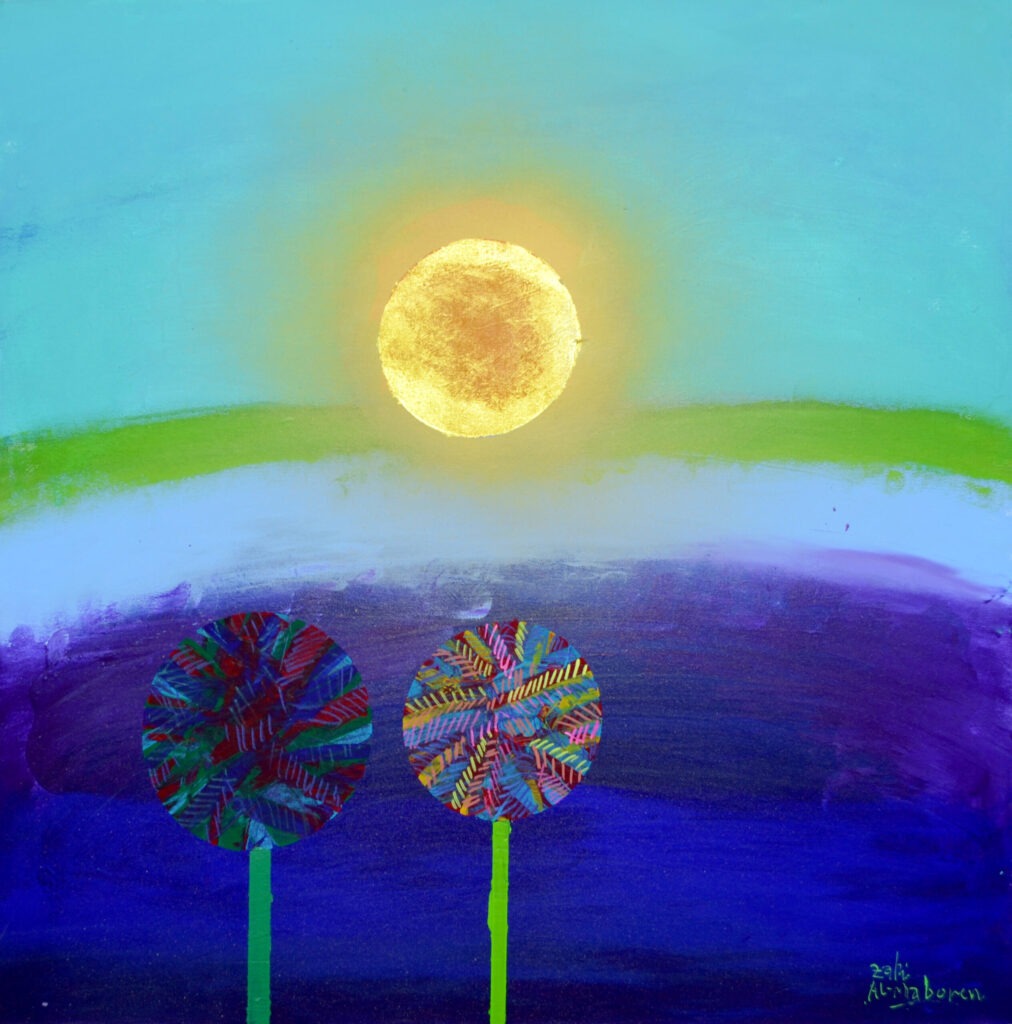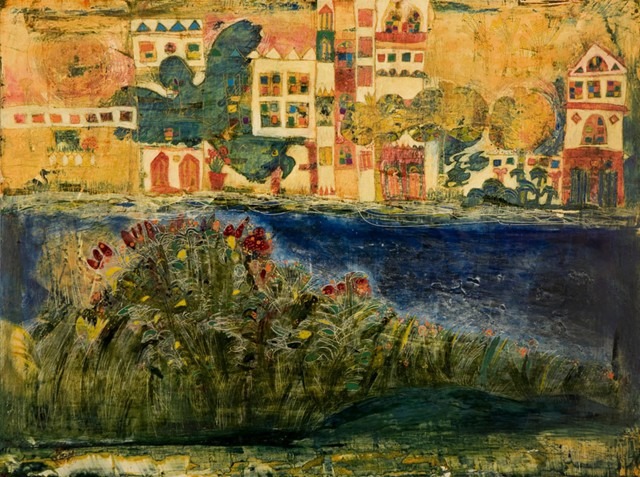Landscapes
The Freedom of Colors
Of course, colors play a crucial role for a painter! And no less so for Zaki Al Maboren. Anyone who has visited one of his exhibitions will be able to say afterwards, 'That was the artist with the colorful paintings.' True! Yet, his new series titled 'Rainbow Fields' seems to possess its very own energy and composition of colors. To understand this, let us first look back to Zaki Al Maboren's beginnings in Sudan.
The East African country is abundantly blessed with colors in its nature and environment. Life there has been and continues to be colorful, even if marked by hardships. In his early days, Zaki Al Maboren did not find it particularly motivating to use many colors in his work. He rather enjoyed keeping his art in black and white. Some colors, he remembers, were also historically burdened. This was especially true for the color of the sun! Yellow or gold, in particular, were closely associated with colonization, Catholicism, and oppression. However, Zaki Al Maboren never wanted to acknowledge this stigmatization of colors. And on his journey to Europe, it was clear to him that colors are innocent and will remain freely available for his work in the future.
Having arrived in Europe, this attitude became a motivation! Because the abundance of colors in everyday life, as he experienced it in Sudan, was no longer present. Especially in the grey winter, the absence of the sun's yellow was a challenge that he confronted in his creativity. In retrospect, this was the time when he brought color into his Europe.
This happened several decades ago, and yet the current theme remains a play of colors with new motivation. Zaki Al Maboren cites two reasons how the idea of the rainbow fields captured his attention.
On the one hand, last year he commuted between the south English Cornwall and the documenta city Kassel. In both places, he observed the interplay of colors of rainbows - their reflection on the water, the surrounding buildings, and fields. In addition, he noticed an increased use of rainbows and rainbow colors in politics as a symbol of an open-minded society threatened by the worldwide shift to the right.

For Zaki Al Maboren, it was clear that he had to take a stance and had to give space to the rainbow in his work. He sees his series "Regenbogenfelder" (Rainbow Fields) as a bridge between heaven and earth, so that the earth becomes as beautiful as heaven.
Among the 16 existing works at the moment, the 3.50-meter-wide canvas paintings stand out. In their background, numerous figures and people overlap. Zaki Al Maboren sees this background as a basic form comparable to the stone of a sculptor that has evolved in nature over millions of years. He considers himself someone who allows himself to be guided by the material and reveals the final image.
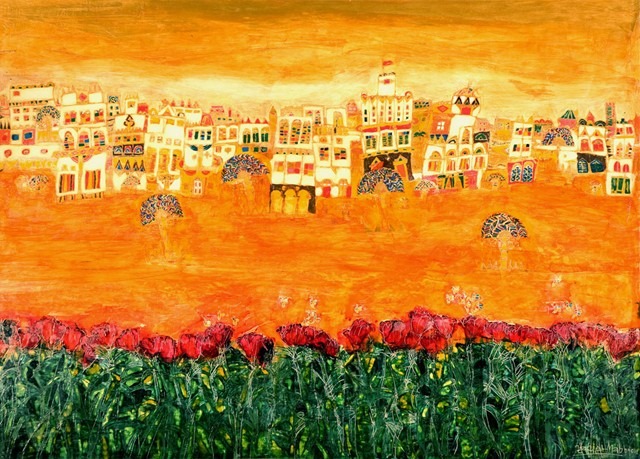
In the final image, the background is never completely covered. It and the energy applied at the beginning to create the base remain visible or can be assumed to be there. All of this happens under the abstract influence of the rainbow! And it doesn't matter to him whether the rainbow only illuminates a keyhole or is reflected on a water surface. Its presence is strength and energy for the respective interplay of colors, even if the bow remains invisible. The overarching theme in all of this is the colors themselves. Yes, one could go so far as to say that the figures and scenes in the paintings are secondary. It is pure painting! And painting has to do with colors, which are free.
Stephan Haberzettl, artort.tv


